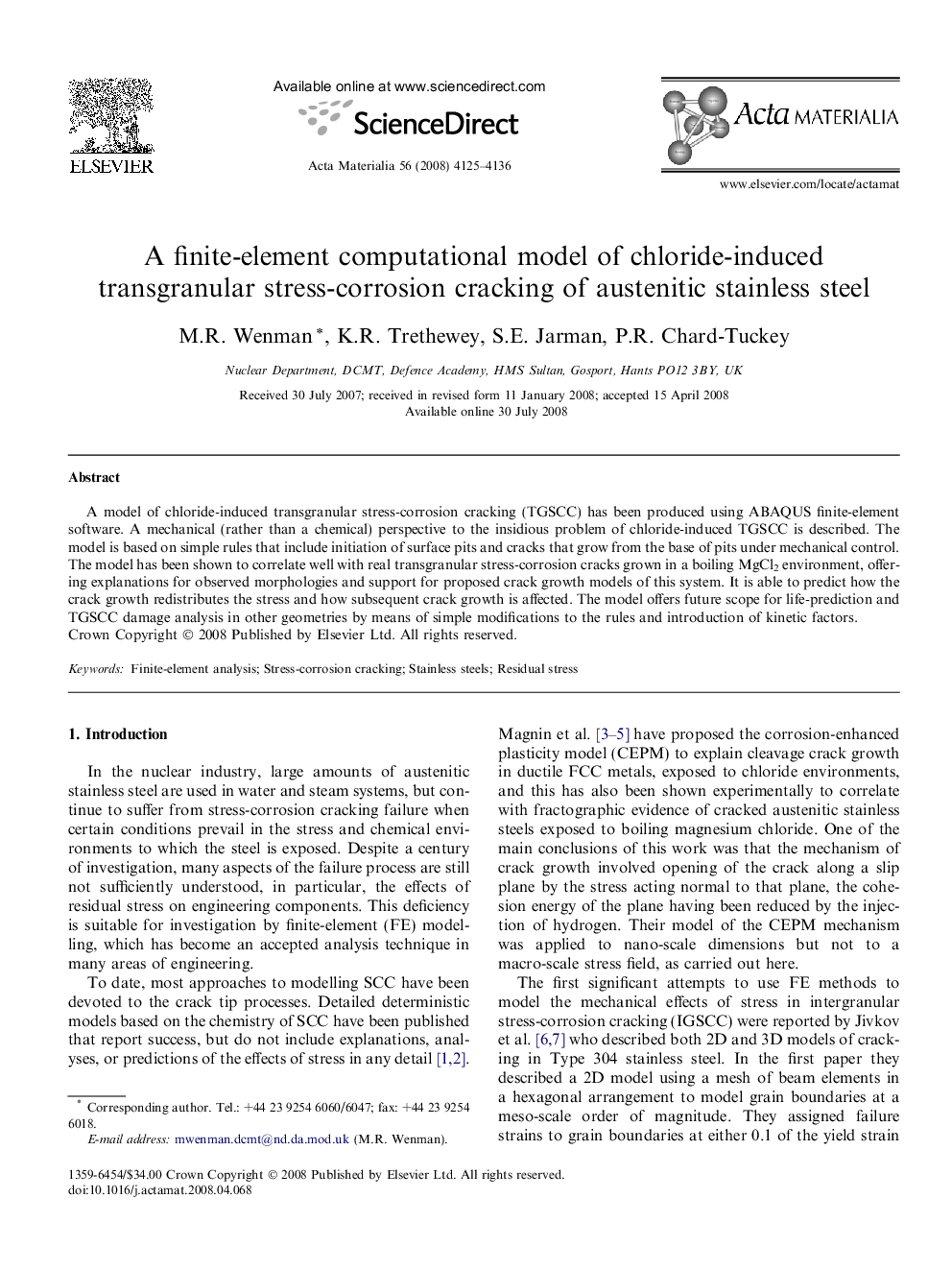| Article ID | Journal | Published Year | Pages | File Type |
|---|---|---|---|---|
| 1448335 | Acta Materialia | 2008 | 12 Pages |
A model of chloride-induced transgranular stress-corrosion cracking (TGSCC) has been produced using ABAQUS finite-element software. A mechanical (rather than a chemical) perspective to the insidious problem of chloride-induced TGSCC is described. The model is based on simple rules that include initiation of surface pits and cracks that grow from the base of pits under mechanical control. The model has been shown to correlate well with real transgranular stress-corrosion cracks grown in a boiling MgCl2 environment, offering explanations for observed morphologies and support for proposed crack growth models of this system. It is able to predict how the crack growth redistributes the stress and how subsequent crack growth is affected. The model offers future scope for life-prediction and TGSCC damage analysis in other geometries by means of simple modifications to the rules and introduction of kinetic factors.
